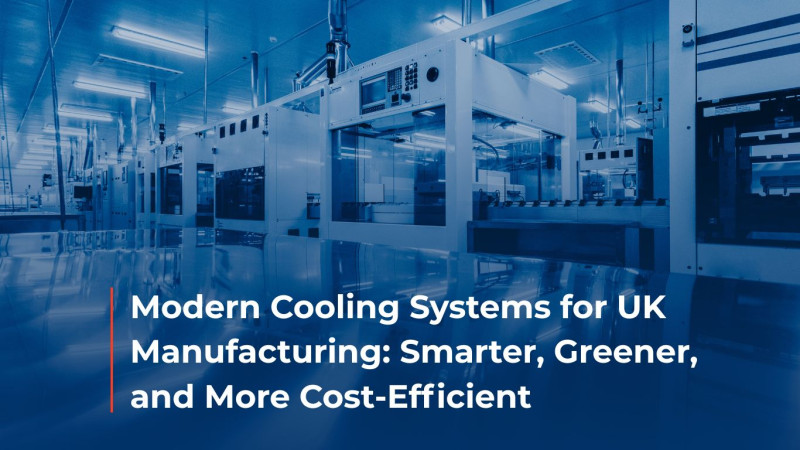What Is Free Cooling?
Free cooling chillers offer a highly efficient method for reducing energy consumption, harnessing the naturally cool temperatures found in the ambient air. By using this cooling method, facilities can significantly lower their reliance on electrically driven cooling, cutting operational costs and reducing carbon emissions.
But what is free cooling, and how does it work?
Understanding a Free Cooling Chiller
A free cooling chiller is a specialised type of cooling system that uses ambient air to cool the chosen heat transfer fluid, rather than relying entirely on mechanical refrigeration. By making use of naturally lower external temperatures, these systems help reduce the energy needed to drive compressors, which are traditionally one of the most power-hungry chiller components.
Unlike conventional chillers, which operate solely on refrigerant-based cooling cycles, free cooling chillers integrate an additional cooling coil or a plate heat exchanger. This component allows the system to dissipate heat using ambient air or water, reducing compressor activity and overall energy demand.
How Does a Free Cooling Chiller Work?
The operation of a free cooling chiller varies according to the outside temperature, switching between different modes to maximise efficiency.
During warmer weather, the chiller operates in mechanical cooling mode. In this state, it functions as a traditional chiller, using compressors and refrigerants to remove heat from the system. The heat absorbed is then released into the air through fans or a water-cooling circuit.
When the weather becomes milder and outdoor temperatures fall below the temperature of the returning water, the system transitions into partial free cooling mode. At this point, it begins to rely on its free cooling coil or heat exchanger to reject some of the heat into the cooler ambient air. This process reduces the workload of the compressors.
In cold weather, when external temperatures are sufficiently low, the chiller can switch to full free cooling mode. In this mode, mechanical cooling is completely bypassed. Instead, fans push air across the heat exchanger, cooling the circulating fluid without the need for compressor operation. This results in considerable energy savings and reduced wear on mechanical components.
The Benefits of Free Cooling Chillers
Free cooling chillers deliver significant energy savings by reducing or eliminating the need for compressor operation. A lower energy demand also translates into a reduced carbon footprint, helping facilities meet sustainability goals and comply with energy efficiency regulations.
Because compressors are used less frequently, their lifespan is extended, lowering maintenance costs and improving equipment longevity. In cooler climates, such as the Northern reaches of the UK, opportunity for full free cooling is greater with the potential return on investment an attractive attribute.
Where Are Free Cooling Chillers Used?
Free cooling chillers are particularly well suited to applications where year-round, 24-hour, cooling is essential. Data centres, for example, benefit greatly from this technology by reducing the heat load on critical IT infrastructure. In industrial process environments, free cooling helps maintain optimal temperatures for machinery and production lines.
Is a Free Cooling Chiller Right for Your Facility?
Facilities that require continuous, 24-hour cooling stand to benefit the most from free cooling technology.
As the world begins to slip into slumber, these facilities are continuing to operate. As night falls, ambient temperatures naturally begin to drop – triggering free cooling circuits into operation.
Even when outdoor conditions don’t allow for full free cooling, hybrid systems that incorporate partial free cooling can still deliver impressive efficiency gains during much of the year. For operations with high cooling loads and constant demand, free cooling offers a route to lower operational costs and robust functional security.
Next Steps
If you’re considering upgrading to a more sustainable and cost-effective cooling solution, or sourcing cooling options for a new project, Cooltherm specialises in high-efficiency systems that help maximise performance while minimising environmental impact.
To learn more, get in touch at enquiries@cooltherm.co.uk or visit www.cooltherm.co.uk.
Related News

Is Your Cooling Strategy Resilient Enough? Lessons from the AWS Outage

Advances in High-Performance Cooling for Data Centres: Liquid Systems, Temperature Chaining and Intelligent Control
